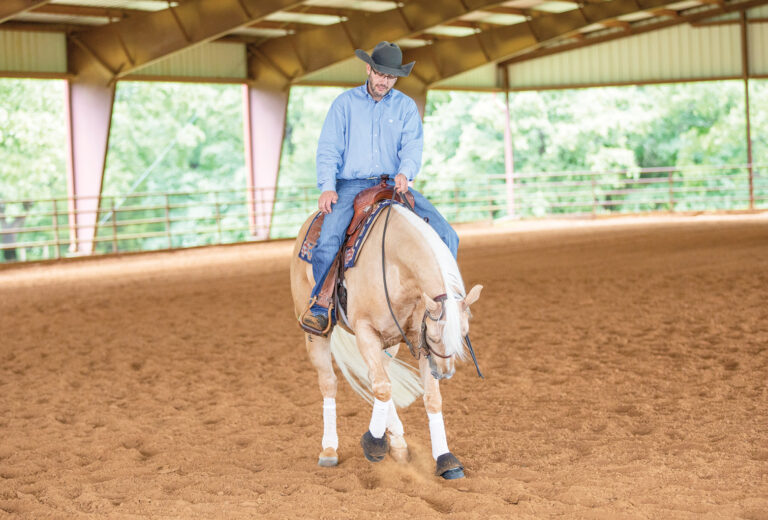Many amateur riders struggle with rollbacks in reining patterns. They get caught up in what they see professional riders achieve and wind up in the penalty box due to over-asking for what they and/or their horse can perform. That’s why I always encourage riders to get a solid mark for their stop and then stay safe in the rollback. Just staying out of the penalty box on the three rollbacks in a pattern can mean the difference between placing and getting the gate.
[READ: Moving Your Horse Off Your Leg]
Ideally, you shouldn’t practice rollbacks too much at home, because your horse will start to anticipate and develop bad habits. But when you do school the maneuver, I suggest using the exercise I’ll describe here. It hones your horse’s responsiveness to your neck rein and improves the timing and precision of your cues.
1. A correct rollback starts with a solid stop. When I’m schooling rollbacks, I ask for an easier stop, but I do want my horse to put his hocks in the ground, as shown here. I don’t have to duplicate the show pen during this drill, but I do want him thinking about stopping before he thinks about rolling back.
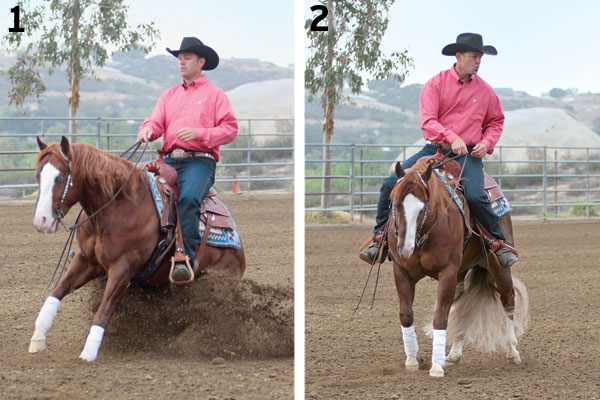
2. When I ask for the rollback, I first use my neck rein. I move my hand back and across in the direction I want to roll back. This differentiates my rollback cue from my spin cue, in which case I keep my hand low and closer to my horse’s centerline. Then I put my outside leg (right, in this case) on to move my horse’s feet around. As you can see here, my horse is a little resistant in his face—his nose doesn’t come across in to my left—and he’s a little heavy on his front end. This is when my rollback drill begins.
3. Instead of preparing my horse to lope off at this point of the rollback, as I would if he’d come through the rollback correctly, I’ll keep my neck rein in place and my right leg on and hustle him around to complete a turn and a half.
[READ HOW: Finish Your Rollback with Bob Avila]
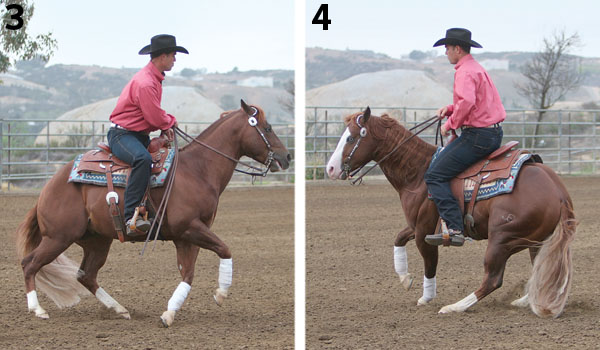
4. It’s OK if he goes a little over a turn and a half. Hustling around the turn makes my horse work harder. The next time I ask him for a rollback, he should be more responsive to my neck rein and lighter on his front end so he can snap back over his hocks for the rollback.
5. When we’ve finished the 540-degree turn, I drive my horse forward, as he would to exit a regular 180-degree rollback. I put my hand forward and both legs on him to keep from trotting out or loping off slowly. He needs to drive out of there and lope off.
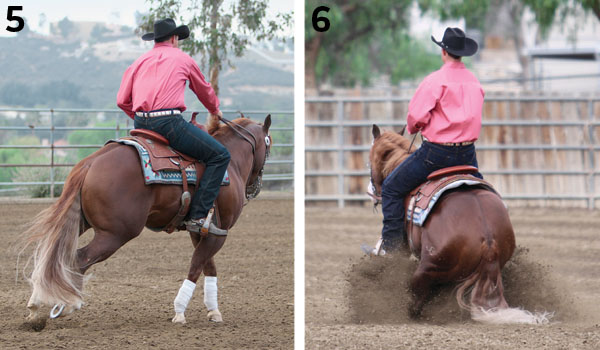
6. Here’s a different view of a correct rollback, where you’ll see all the parts come together after I’ve tuned up my horse’s responsiveness. He comes to a good, solid stop here, with his hocks underneath him.
7. Unlike in Photo 2, my horse responds to my neck rein. You can see that my hand is slightly back and to my left to cue for the rollback. My horse also is lighter when he moves his body off of my right leg to bring his shoulders through the turn.
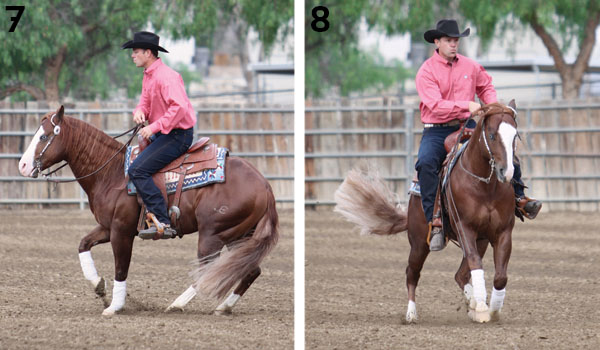
8. My body and hand position encourage my horse to hustle forward out of his rollback with power and control. I’ll lope him off, and then let him walk as a reward for doing the maneuver correctly.
[READ: Invisible Riding Cues]
Mike Berg, Temecula, California, trains open reining and cow horses and coaches amateur riders along with his wife, Kristi. Berg is a multiple AQHA World Show top-10 finisher and is a regular finalist at marquee NRHA events. He and his wife have two sons. Learn more at bergperformancehorses.com.

